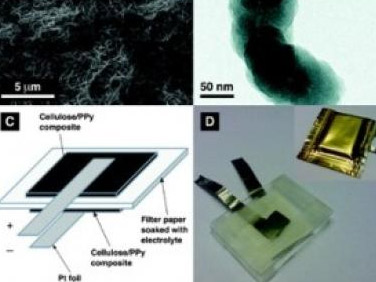Swedish scientists unwrap paper batteries

Researchers at Uppsala University in Sweden have created a rechargeable battery that's almost indistinguishable from normal paper.
The new cheap, flexible power technology is possible thanks to nano-engineered plastic electronics and a new type of cellulose made from green algae.
The scientists envisage ultra-thin, disposable electronic gadgets, such as wrapping paper that lights up with 'Happy Birthday' messages and communications technology built in to clothing.
Welcoming new technology into the fold
Scientists have long sought light, ecofriendly, inexpensive batteries consisting entirely of nonmetal parts called conductive polymers. The Swedish researchers realised that one such material - polypyrrole (PPy) - could have its capacity and charging ability vastly increased by coating it over a large area in a nano-thin layer about 1/50,000th the thickness of a human hair.
They used a background layer of a special kind of cellulose (or paper) made from algae that was 100 times as porous as normal paper, allowing it to hold and discharge electricity efficiently. The electrodes of the new battery are simply normal filter papers soaked in a salt solution.
The paper battery recharges faster than conventional rechargeable batteries and appears well-suited for applications involving flexible electronics, such as clothing and packaging, the scientists say. Alternatively, low-cost, very large energy storage devices having electrodes of several square yards in size could potentially be made in the future.
Sign up for breaking news, reviews, opinion, top tech deals, and more.
Mark Harris is Senior Research Director at Gartner.